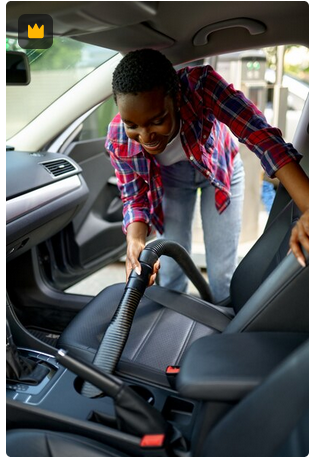Keeping car seats neat is important for several reasons:
- Appearance: A neat car seat makes the overall interior of the car look cleaner and well-maintained. A dirty or cluttered car seat can make the entire car feel uninviting and unpleasant.
- Health: Dirty car seats can harbor bacteria, mold, and allergens, which can cause health problems such as allergies, respiratory issues, and infections. Regular cleaning of car seats can help prevent the accumulation of these harmful substances.
- Safety: A dirty or cluttered car seat can also pose a safety risk. Loose items on the seat can become projectiles in the event of an accident, while stains or debris can make it difficult to see out the window or control the vehicle.
- Maintenance: Regularly cleaning and maintaining car seats can help prolong their lifespan and prevent wear and tear. This can save money in the long run by reducing the need for expensive repairs or replacement.
How to Clean Car Seats
Keeping the interior of your car clean and tidy is essential to maintain the overall hygiene and longevity of your vehicle. One of the most important areas to clean is the car seats. Over time, car seats accumulate dirt, stains, and odors from various sources such as food spills, sweat, pet hair, and everyday use. To keep your car seats looking new and smelling fresh, regular cleaning is required. Here is a step-by-step guide on how to clean car seats.
Materials Needed:
- Vacuum cleaner with upholstery attachment
- Microfiber towels or clean rags
- Soft-bristled brush or sponge
- All-purpose cleaner or upholstery cleaner
- Warm water
- Bucket
- Leather conditioner or fabric protectant (if applicable)
Step 1: Vacuum the Car Seats
The first step to cleaning car seats is to vacuum them thoroughly. Use a vacuum cleaner with an upholstery attachment to remove any loose dirt, dust, and debris from the seats. Pay special attention to the crevices and seams where dirt and debris tend to accumulate.
Step 2: Identify the Type of Material
The type of material used to make the car seats will determine the cleaning method you should use. Car seats can be made of leather, vinyl, fabric, or a combination of these materials. Check the car manual or manufacturer’s website to identify the type of material used in your car seats.
Step 3: Spot Test
Before applying any cleaning solution on the car seats, it’s essential to do a spot test to ensure that the solution won’t damage the material. Apply a small amount of the cleaning solution on an inconspicuous area of the seat and wait for a few minutes to see if there is any discoloration or damage.
Step 4: Apply the Cleaning Solution
For fabric seats, apply an all-purpose cleaner or upholstery cleaner on the seats. Spray the solution on the seats and use a soft-bristled brush or sponge to scrub the seats gently. Be sure to work on one section at a time and rinse the brush or sponge frequently to remove dirt and grime.
For leather or vinyl seats, use a cleaner specifically designed for these materials. Apply the cleaner on a microfiber towel or clean rag and rub it on the seats gently. Be sure to apply the cleaner evenly and avoid using too much water, which can damage the material.
Step 5: Rinse the Seats
After applying the cleaning solution, rinse the seats thoroughly with warm water. Use a clean sponge or microfiber towel to remove any excess cleaning solution and dirt from the seats. Be sure to wring out the sponge or towel frequently to prevent over-saturating the seats.
Step 6: Dry the Seats
Once you have rinsed the seats, use a clean microfiber towel or rag to dry them. Gently blot the seats to remove any excess water. Avoid using a hairdryer or leaving the car in direct sunlight to dry, as this can cause the seats to crack or fade.
Step 7: Apply Leather Conditioner or Fabric Protectant
If you have leather seats, apply a leather conditioner to keep the leather soft and prevent cracking. For fabric seats, apply a fabric protectant to prevent stains and make cleaning easier in the future. Follow the manufacturer’s instructions on the product label for best results.
Conclusion
In conclusion, cleaning car seats is a crucial part of maintaining the overall hygiene and longevity of your vehicle. By following these simple steps, you can keep your car seats looking new and smelling fresh for years to come. Regular cleaning and maintenance of car seats will not only increase the comfort of your driving experience but also add value to your car.















+ There are no comments
Add yours